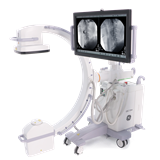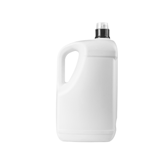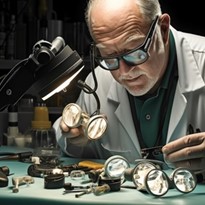Surgical precision and visual clarity are paramount in medical procedures, and the role of surgical headlights and loupes in achieving these goals cannot be overstated. This article delves into the key factors to consider when selecting a surgical headlight and loupe system, focusing on their contribution to optimal performance in the operating room.
II. Types of Surgical Headlights: LED, Xenon, Fiber Optic, etc.
- Surgical headlights come in various types, including LED, Xenon, and Fiber Optic variants.
- Each type employs distinct technologies that influence their performance.
- A neutral comparison of their advantages and disadvantages aids informed decision-making.
- The impact of different types on surgical precision and visual clarity is a critical consideration.
III. Advantages of Using Surgical Headlights and Loupes for Surgeons
- Improved Precision: Surgical headlights and loupes provide focused, high-intensity illumination directly onto the surgical field. This enhanced visibility allows surgeons to see fine details and perform intricate procedures with greater precision.
- Enhanced Depth Perception: Loupes offer magnification, which helps surgeons perceive depth and spatial relationships more accurately. This is especially valuable for tasks that involve suturing, dissecting, or working in tight spaces.
- Reduced Eye Strain: The intense and focused illumination from surgical headlights reduces the need for surgeons to strain their eyes, even during long and complex surgeries. This can lead to reduced eye fatigue and improved concentration.
- Better Ergonomics: Surgical loupes are typically designed to provide a comfortable working posture, reducing the risk of musculoskeletal strain and fatigue. This promotes better ergonomics and long-term career sustainability for surgeons.
- Accurate Diagnosis: Clear and well-illuminated visuals enable surgeons to make more accurate diagnoses during surgery. They can identify and address unexpected issues or complications promptly, leading to better patient outcomes.
- Minimal Tissue Trauma: Improved visibility can help surgeons minimize tissue damage during procedures. This is especially crucial in delicate surgeries, where preserving healthy tissue is essential.
- Faster Procedures: Enhanced precision and visibility often lead to quicker surgeries. This not only reduces the time patients spend under anesthesia but also decreases the risk of complications associated with prolonged surgeries.
- Lower Error Rates: The combination of better visibility and magnification provided by surgical headlights and loupes can lead to a reduction in surgical errors, making procedures safer for patients.
- Increased Confidence: Surgeons using these tools often report increased confidence in their abilities, which can positively impact their overall performance and patient outcomes.
- Adaptability: Surgical headlights and loupes can be used in a wide range of medical specialties, from neurosurgery to dentistry. They offer adaptability and versatility for various surgical settings.
- Patient Satisfaction: The benefits of using surgical headlights and loupes, including improved precision and reduced complications, contribute to higher patient satisfaction and better post-operative outcomes.
IV. Introduction to Surgical Headlights and Loupes: Enhancing Precision and Visual Clarity in Medical Procedures
Understanding the Significance of Visual Clarity in Surgery
In the world of surgery, the smallest details can have life-altering consequences. Whether it's a delicate neurosurgical procedure or a complex dental surgery, visual clarity is essential. This section explores why precise vision is crucial in medical procedures.
The Evolution of Surgical Headlights and Loupes
The history of surgical headlights and loupes is a fascinating journey. From simple candlelight to advanced LED technology, we'll trace the evolution of these tools.
How Surgical Headlights Work
Let's dive into the mechanics of surgical headlights. Understanding how they function is the first step in appreciating their role in enhancing precision.
Advantages of Using Surgical Headlights
Explore the myriad benefits that surgical headlights bring to the operating room. From reduced eye strain to improved focus, these advantages are game-changers.
Types of Surgical Headlights
Not all surgical headlights are created equal. Discover the different types available and their specific applications.
Selecting the Right Surgical Headlight
Choosing the appropriate surgical headlight can be a daunting task. We'll provide guidance on factors to consider when making this crucial decision.
How Surgical Loupes Enhance Vision
Surgical loupes are magnification devices that surgeons wear. Learn how they contribute to improved visual clarity.
Different Types of Surgical Loupes
Not all loupes are the same. This section highlights the various types of surgical loupes and their suitability for different medical fields.
Choosing the Correct Surgical Loupe
Selecting the right surgical loupe is as important as choosing the right headlight. We'll offer tips on making the right choice.
Integration of Headlights and Loupes
Discover how the combination of surgical headlights and loupes creates a powerful synergy that benefits surgeons immensely.
Impact on Surgeon Ergonomics
Ergonomics matter in the operating room. Find out how these tools contribute to better posture and reduced physical strain for surgeons.
Applications Across Medical Specialties
Surgical headlights and loupes aren't limited to one field. We'll explore how they find applications across various medical specialties.
Training and Adaptation
Surgeons need training to harness the full potential of these tools. Learn about the training process and how surgeons adapt to using them.
Ensuring Proper Maintenance
Maintenance is key to the longevity and effectiveness of surgical headlights and loupes. We'll provide tips on keeping them in optimal condition.
Future Trends in Surgical Visualization
The future holds exciting possibilities for surgical visualization technology. We'll look at upcoming trends and innovations.
V. Magnification Levels and Working Distances: Customizing for Surgeon Comfort
- Magnification levels and working distances hold paramount importance.
- Surgeons personalize these settings to align with their comfort and requirements.
- Striking a balance between magnification and working distance is essential for peak performance.
- Expert insights emphasize the risks of inadequate settings and their impact on surgical outcomes.
VI. Balancing Weight and Comfort in Prolonged Surgical Procedures
Surgical professionals understand that efficiency and comfort are paramount during lengthy procedures. As the demands of modern medicine evolve, it becomes increasingly crucial to find the right balance between equipment weight and the comfort of the surgical team. In this article, we delve into the critical aspects of achieving this equilibrium, ensuring optimal surgical outcomes.
The Weight Dilemma
Surgical instruments and equipment have seen remarkable advancements in recent years, offering cutting-edge technologies that aid in precise interventions. However, with these innovations often comes an increase in the weight of these tools. Surgeons and their teams frequently find themselves grappling with the challenge of managing heavier equipment during prolonged surgeries.
The weight of surgical instruments can lead to fatigue and discomfort for the surgical team. Over time, this discomfort can affect concentration and dexterity, potentially compromising the success of the procedure. Thus, addressing the issue of weight is pivotal in maintaining high standards of surgical care.
Prioritizing Comfort
Comfort is not a luxury but a necessity in the operating room. Surgical teams spend hours on their feet, meticulously navigating complex procedures. Any discomfort they experience can result in distractions, decreased focus, and ultimately, surgical errors.
To enhance comfort, healthcare facilities are investing in ergonomic surgical equipment and furniture. Adjustable operating tables, ergonomic chairs, and padded flooring are just a few examples of how comfort is being prioritized in the surgical environment. These enhancements contribute to reduced fatigue, increased focus, and ultimately better surgical outcomes.
Strategies for Balancing Weight and Comfort
- Ergonomic Instrument Design: Manufacturers are increasingly focusing on creating instruments with ergonomic handles and lightweight materials. These innovations reduce the strain on surgeons' hands and arms, allowing for greater precision and less fatigue.
- Team Training: Ensuring that surgical teams are well-trained in ergonomic principles is essential. This includes proper body mechanics and the use of assistive devices to handle heavy equipment more efficiently.
- Regular Breaks: Incorporating short breaks during long surgeries allows the surgical team to rest and regroup. This practice can significantly enhance comfort and concentration.
- Investing in Technology: Advancements in robotic surgery have introduced minimally invasive techniques, reducing the need for heavy instrumentation. These technologies not only ease the burden on surgical teams but also lead to quicker patient recovery.
- Collaboration with Manufacturers: Surgeons and healthcare facilities can collaborate with instrument manufacturers to provide feedback on instrument design. This partnership can lead to the development of tools that are both effective and lightweight.
VII. Adjustability and Ergonomics: Adapting to Individual Surgeon Preferences
In the realm of surgical excellence, adaptability and ergonomics have emerged as pivotal factors. Understanding and catering to the unique preferences of individual surgeons is now recognized as essential in optimizing surgical outcomes.
The Significance of Adaptability
Every surgeon possesses a distinct set of skills, techniques, and preferences that they've honed over their career. Recognizing and accommodating these individual nuances can significantly impact surgical performance. The concept of adaptability encompasses the customization of surgical environments and tools to align with these unique preferences.
Ergonomics as a Key Player
Ergonomics plays a central role in this endeavor. Creating a surgical workspace that is ergonomically designed allows surgeons to perform at their best. This involves not only the arrangement of instruments but also the adjustment of equipment to suit the surgeon's specific needs.
Customizing the Surgical Experience
- Instrumentation Adjustments: Surgical instruments are now designed with a greater degree of adjustability. From adjustable handles to interchangeable tool heads, these innovations enable surgeons to tailor their instruments to their individual techniques.
- Operating Room Layout: The arrangement of instruments, monitors, and equipment within the operating room can be customized to suit the surgeon's preferred workflow. This layout optimization enhances efficiency and reduces unnecessary movements during surgery.
- Seating and Positioning: Ergonomic surgical chairs and adjustable operating tables are pivotal in ensuring the surgeon's comfort. These elements can be adapted to suit the surgeon's height, posture, and preferred positioning during surgery.
- Lighting and Visualization: Adjustable lighting and high-definition visualization systems offer customization options to cater to individual surgeon preferences. These features ensure optimal visibility throughout the procedure.
- Communication and Collaboration: Effective communication within the surgical team is essential. Surgeons may have preferred methods of communication, such as specific signals or cues, which should be accommodated to enhance teamwork.
Benefits of Adaptability and Ergonomics
The benefits of embracing adaptability and ergonomics in the surgical setting are far-reaching:
- Enhanced Efficiency: Surgeons can work more efficiently when their tools and environment align with their preferences, leading to shorter procedure times.
- Reduced Fatigue: Customized equipment reduces physical strain, minimizing surgeon fatigue during prolonged surgeries.
- Improved Precision: Surgeons can achieve greater precision and accuracy when they can adjust instruments and equipment to their liking.
- Increased Satisfaction: Surgeons who work in tailored environments tend to experience higher job satisfaction, which can have a positive impact on patient care.
In the ever-evolving landscape of surgical advancements, the role of surgical headlights and loupes is undeniable. These tools, through their precision, illumination, and ergonomic design, have become indispensable allies to surgeons in their quest for optimal performance and patient well-being. From the choice of the right type of surgical headlight to the balancing act of magnification levels and working distances, and the pursuit of adaptability and ergonomics tailored to individual surgeon preferences, the journey toward excellence in the operating room is guided by a commitment to enhancing surgical precision and visual clarity. In this pursuit, surgical headlights and loupes shine as beacons of progress, offering not only enhanced precision but also improved surgeon comfort, minimized errors, and ultimately, better patient outcomes. As these tools continue to evolve, they stand as a testament to the unwavering dedication of the medical community to the art and science of surgery.


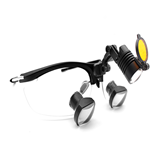


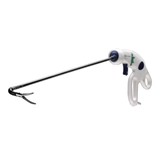
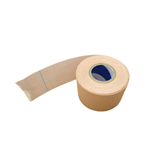

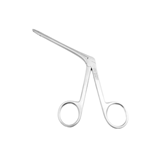
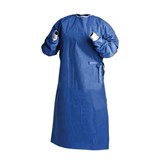
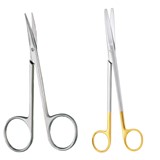
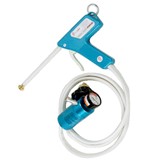
%20(1)-160x160-state_article-rel-cat.png)
